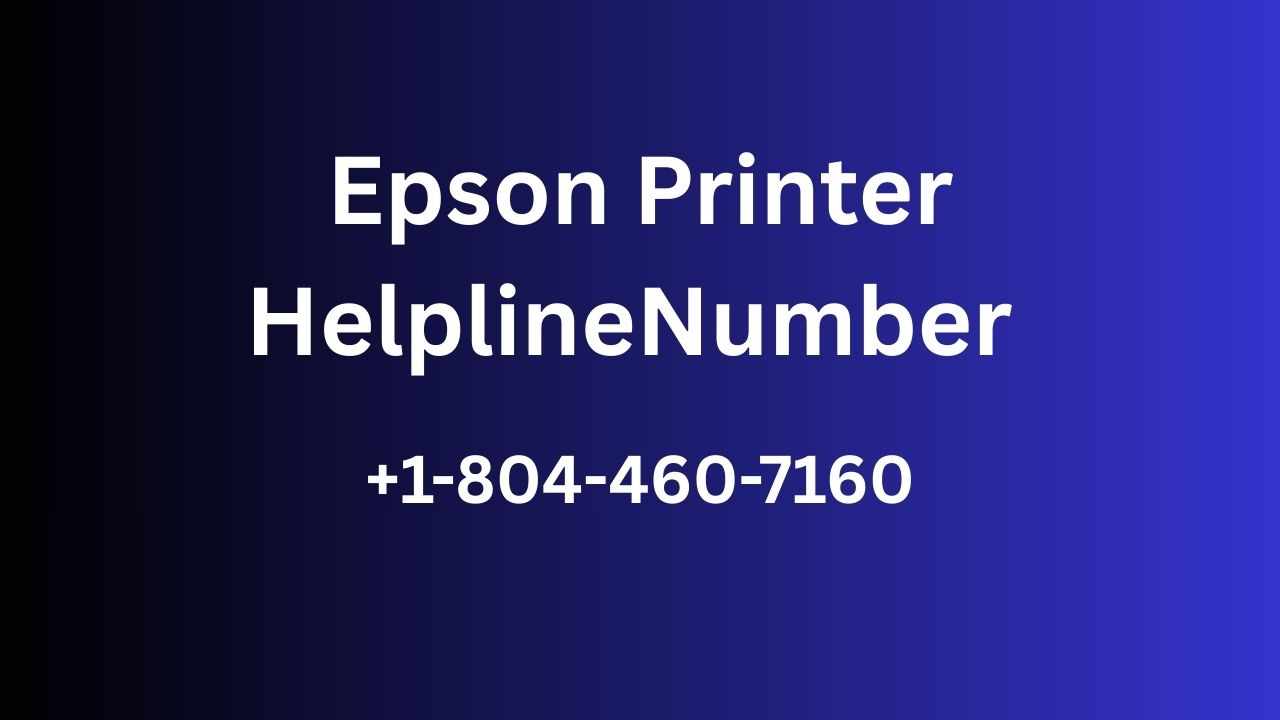
Introduction
Installing an Epson printer on your computer (Call USA/CA: +1-804-460-7160) is a straightforward process, but many users face confusion when dealing with drivers, connectivity, and setup steps. Whether you’re using Windows or Mac, a proper installation ensures smooth printing, scanning, and reliable performance. This guide provides a clear step-by-step process to install your Epson printer, covering both wired and wireless setups, driver installation, and troubleshooting tips.

Click Here For Epson Support
Preparing for Installation
Before you begin the installation, ensure you have the following:
A compatible Epson printer model.
A stable internet connection for downloading drivers or connecting wirelessly.
The printer’s power cable and, if needed, a USB cable for direct connection.
Your WiFi network name and password (for wireless setup).
Having these essentials ready will make the installation process smoother and prevent unnecessary interruptions.
Step 1: Unbox and Power On Your Epson Printer
Start by carefully unboxing your Epson printer and removing all protective materials, including tapes and covers. Place the printer on a flat surface near your computer. Connect the power cord to an outlet and press the power button to turn it on. Install the ink cartridges and load plain paper into the input tray following the instructions in the manual.
Step 2: Choose a Connection Method
Epson printers can connect to your computer in two main ways:
USB Connection: A direct connection using a USB cable.
Wireless Connection (WiFi): The printer connects through your wireless router and communicates with your computer over the same network.
Select the method that best suits your needs. A USB connection is quick and reliable, while WiFi offers more flexibility for multiple devices.
Step 3: Download Epson Printer Drivers
The printer driver is essential for communication between your Epson printer and computer. Without the proper driver, your computer won’t recognize the printer.
Go to the official Epson support website.
Enter your printer model in the search box.
Download the latest drivers and utilities compatible with your operating system (Windows or macOS).
Save the downloaded file on your computer for installation.
Step 4: Install Drivers on Windows (Call USA/CA: +1-804-460-7160)
For Windows users, follow these steps:
Locate the downloaded driver file and double-click it to begin installation.
Follow the on-screen instructions to accept terms and conditions.
When prompted, select your connection method (USB or WiFi).
If USB, connect the cable between the printer and computer when asked.
If WiFi, ensure your computer and printer are connected to the same wireless network and enter your WiFi credentials during setup.
Once the installation is complete, Windows will recognize your Epson printer automatically.
Step 5: Install Drivers on Mac
For Mac users, the steps are slightly different:
Open the downloaded driver package and run the installer.
Follow the prompts to complete the installation.
Choose your connection type (USB or WiFi).
If using WiFi, ensure the printer is connected to your wireless network. You can do this by using the printer’s control panel or Epson setup utility.
After installation, open “System Preferences” and select “Printers & Scanners” to add your Epson printer.
Your Mac will now detect the printer, and you can set it as the default printing device.
Step 6: Test the Printer
After installation, it’s important to verify the setup:
Open a document or image on your computer.
Select “Print” and choose your Epson printer from the list.
Print a test page to ensure everything is working correctly.
If the print comes out properly, your installation is successful.
Step 7: Configure Additional Features
Epson printers often come with additional features such as scanning, duplex printing, or mobile printing. To configure these:
Install Epson Scan Utility or Epson ScanSmart software for scanning.
Enable mobile printing options like Epson iPrint or AirPrint (for Apple devices).
Explore advanced settings such as print quality, paper size, and borderless printing for customized use.
Common Installation Issues and Fixes
Even with the correct steps, you may face some issues. Here are quick fixes:
Printer not detected: Ensure the USB cable is connected securely or the printer is on the same WiFi network as your computer.
Driver errors: Download the latest driver from the Epson website to replace outdated versions.
Print jobs stuck in queue: Restart both the printer and computer, then clear the print queue.
WiFi setup failure: Reset the printer’s network settings and try connecting again using the Epson setup utility.
Tips for Smooth Installation
Always use the official Epson website for downloading drivers to avoid compatibility issues.
Keep your operating system updated to ensure smooth communication with the printer.
Place your printer close to the WiFi router for better signal strength if using wireless mode.
Register your Epson printer on the Epson website for warranty and software updates.
Conclusion
Installing an Epson printer on your computer (Call USA/CA: +1-804-460-7160) doesn’t have to be complicated. By following the step-by-step guide outlined above, you can set up your printer within minutes, whether you are using Windows or Mac. From unboxing and choosing the right connection method to installing drivers and testing the setup, every step is essential for reliable performance. Once installed, you’ll enjoy smooth printing, scanning, and advanced features that make your Epson printer a valuable tool for home and office tasks.




















Write a comment ...